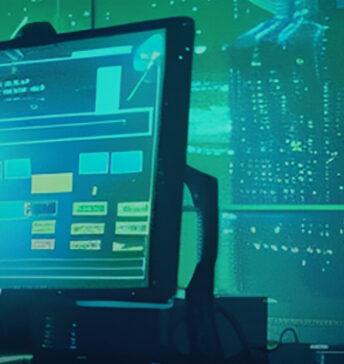Modern businesses heavily rely on software applications to operate efficiently, but many organizations grapple with outdated systems that hinder growth and innovation. This is where application modernization can help.
What is application modernization? Essentially, it’s the process of upgrading and enhancing legacy software applications to align with modern technology standards and business objectives. By modernizing existing applications and incorporating new technology into the software development process, businesses can unlock a myriad of benefits.
Increased agility, efficiency, and scalability become attainable as organizations can adapt to changing market conditions more swiftly. Additionally, application modernization is crucial for bolstering security, protecting sensitive data, and reducing operational costs. To help you reap the reward of these benefits, this article is breaking down the different approaches to application modernization, providing guidance on getting started with this transformative process.
What is Application Modernization?
Application modernization is the process of updating and transforming legacy software systems to align with modern computing approaches. This involves migrating existing applications to cloud-native architectures, breaking down monolithic applications into microservices, and adopting DevOps practices for faster development and deployment cycles.
Why do organizations embark on this journey? The reasons are plentiful. Firstly, staying competitive in the digital world requires applications that can keep up with ever-changing market demands. In this sense, modernization is a necessity, ensuring that businesses can deliver innovative features and services at the same speed as their competitors. Secondly, modernized applications often offer improved performance, responsiveness, and accessibility, leading to strengthened user experiences and increased customer satisfaction. Finally, extending the life of existing applications is also important. By modernizing, organizations can also avoid the costly and disruptive process of building new applications from scratch.
Key Benefits of Application Modernization
Application modernization offers a multitude of advantages that can significantly impact an organization’s bottom line and overall success. Potential benefits of application modernization include:
- Improved Scalability and Performance: By leveraging modern infrastructure and technologies, organizations can enhance application responsiveness and scalability. This is crucial for handling fluctuating workloads and ensuring optimal performance during peak usage periods.
- Cost Efficiency: Modernizing applications often leads to significant cost reductions. By consolidating infrastructure, optimizing resource utilization, and adopting cloud-based solutions, businesses can streamline IT operations and reduce expenses.
- Enhanced Security: Outdated applications are often vulnerable to cyberattacks. Modernization involves implementing robust security measures, such as encryption, access controls, and regular security updates, to protect sensitive data and prevent breaches.
- Business Agility and Innovation: Modernized applications are more adaptable to changing business requirements. This agility allows organizations to respond quickly to market trends, introduce new products and services, and gain a competitive edge.
- Improved Customer Experience: Modern applications deliver enhanced user experiences by providing faster load times, improved responsiveness, and intuitive interfaces. By focusing on customer satisfaction, businesses can increase customer loyalty and drive revenue growth.
Ultimately, application modernization empowers organizations to optimize business processes, harness the benefits of the cloud, and deliver exceptional value to customers.
Common Risks and Challenges
While application modernization offers significant benefits, it also presents a range of challenges that organizations must address, including:
- Technical Debt: Legacy systems often accumulate technical debt over time, resulting in complex and inefficient codebases. Modernizing these systems requires substantial effort to address underlying issues and modernize the technology stack.
- Data Migration and Integration: Moving data from legacy systems to new platforms can be complex and time-consuming. Ensuring data integrity, security, and compatibility during migration is crucial to avoid disruptions.
- Cultural and Organizational Change: Successfully modernizing applications requires a shift in company culture and processes. Adopting Agile and DevOps methodologies, as well as fostering a culture of innovation, can be challenging for companies to achieve on their own.
- Cost and Time Overruns: Application modernization projects often involve significant investments in terms of time and resources. Unforeseen complexities can lead to budget and schedule overruns, impacting project success.
Addressing these challenges will require careful planning, risk management, and a strategic approach to modernization. By understanding the potential hurdles and implementing appropriate mitigation strategies, organizations can increase their chances of a successful modernization journey. In some cases, partnering with an expert organization can provide the necessary expertise and resources to overcome these challenges.
Types of Application Modernization
By modernizing their applications, organizations can streamline business operations, enhance efficiency, and unlock new opportunities for growth. But it’s important to understand that there are several approaches to application modernization, each tailored to specific business needs and application characteristics. These approaches include re-platforming, refactoring, and rebuilding.
To choose the best strategy for their needs, business leaders will need to consider the potential benefits and challenges of each method. Application modernization strategies include:
- Lift and shift: This involves migrating applications to the cloud without making significant code changes. While it’s a quick way to take advantage of cloud benefits, it often doesn’t address underlying technical debt or optimize for cloud-native capabilities.
- Refactoring: This approach focuses on improving the code structure and design without altering the application’s functionality. It can enhance performance, maintainability, and scalability but requires significant development effort.
- Re-platforming: This strategy involves moving an application to a new platform, such as a cloud platform, with minimal code changes. It allows organizations to leverage new platform features while preserving the application’s core logic.
- Containerization: Packaging applications and their dependencies into standardized units called containers enables efficient deployment and management across different environments. This approach is essential for cloud-native architectures and microservices.
- Microservices: Breaking down monolithic applications into smaller, independently deployable services improves agility, scalability, and resilience. It requires careful planning and development but can deliver significant benefits.
- API creation: Exposing application functionality through APIs enables integration with other systems and the development of new services. This approach can drive innovation and improve business processes.
The right approach to application modernization will depend on several factors, including the application’s age and complexity as well as the company’s goals and resources. A thorough assessment of the current state and the desired outcomes is essential to determine the best strategy. By carefully considering these factors, organizations can maximize the benefits of application modernization and drive business success.
Getting Started with Application Modernization
Embarking on an application modernization journey can be overwhelming, but with an intentional, structured approach, business leaders can tackle application modernization projects one step at a time.
Here are some initial steps to consider:
- Identify Applications for Modernization: Begin by assessing your application portfolio to identify candidates for modernization. Prioritize applications that are critical to business operations, have high maintenance costs, or hinder innovation.
- Assess Application Health: Conduct a thorough evaluation of each selected application, considering factors such as code quality, performance, security, and integration capabilities. This assessment will help determine the modernization strategy and effort required.
- Define Modernization Goals: Clearly articulate the desired outcomes of the modernization project. Consider factors such as improving scalability, enhancing user experience, reducing costs, or increasing agility. Aligning modernization goals with overall business objectives is crucial.
- Choose a Modernization Strategy: Select the appropriate modernization approach based on application characteristics, business requirements, and available resources. Options include re-platforming to the cloud, refactoring, or rebuilding. A hybrid cloud strategy might be suitable for organizations with a mix of cloud-based and on-premises applications.
- Create a Detailed Modernization Plan: Develop a comprehensive plan outlining project scope, timelines, budget, resources, and potential risks. Consider involving key stakeholders and establishing clear roles and responsibilities.
By following these steps, organizations can lay a solid foundation for successful application modernization. Remember: modernization is often an ongoing process, requiring continuous evaluation and adaptation.
Conclusion
By transforming legacy applications into modern, scalable, and secure systems, organizations can unlock a wealth of benefits, including improved scalability, enhanced security, and increased business agility.
As technology continues to evolve, the application environment will continue to change. Emerging trends such as artificial intelligence, machine learning, and serverless computing will undoubtedly shape the future of application modernization. To stay ahead of the curve, businesses must adopt a proactive approach and develop a comprehensive modernization strategy.
Are you ready to embark on your application modernization journey? To dive deeper into the topic, download our comprehensive guide to application modernization or fill out a short form to receive a custom roadmap for your modernization project!



















